“Where the Book of Mormon Went to Press,” Ensign, Feb. 1989, 44
Where the Book of Mormon Went to Press
Visitors to the Grandin Building can see how the book was first printed.
In 1830, a small publisher in Palmyra, New York, printed the first 5,000 copies of the Book of Mormon. Since then, millions of copies have been printed in 78 languages. These pages showcase the building—now a visitors’ center—where the book was printed.
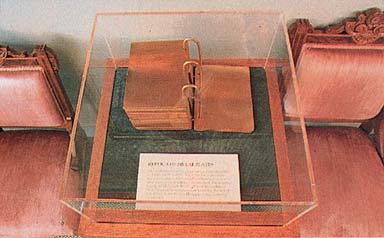
Model of the gold plates, based on eyewitness descriptions of their appearance. By the inspiration of God, Joseph Smith translated the Book of Mormon from an ancient American record made of thin gold plates.
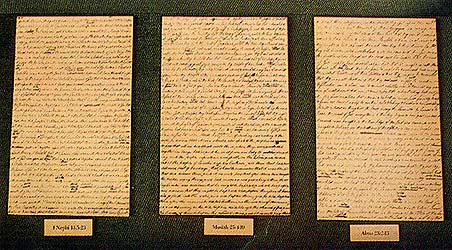
Three sheets from the printer’s manuscript of the Book of Mormon. The original manuscript that Oliver Cowdery made under Joseph Smith’s dictation was written so quickly that it contained no punctuation, little capitalization, and many spelling errors. At Joseph Smith’s request, Oliver Cowdery made another handwritten copy for the printer to use. This extra copy helped protect the translation from possible loss.
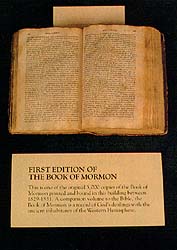
An original copy of the first edition of the Book of Mormon. In the 1830s, a normal edition consisted of 500 to 1,000 books. Major printers sometimes printed editions of up to 2,000 copies. A 5,000-copy edition was rare.

Quotation on the impact of the Book of Mormon, from a speech given by author and editor Henry A. Wallace at the New York Times Book Fair, 5 November 1937.
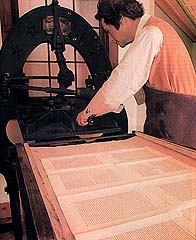
Replica of the hand-operated press that printed the Book of Mormon. Because of the size of the print run, Grandin bought a new typeface, Duodecimo, for the book.
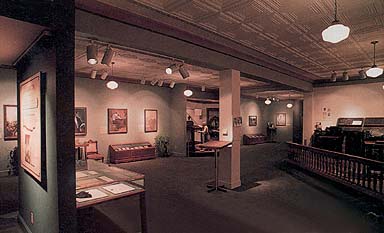
The first floor of the Grandin building houses displays and old-style presses, which still work. Originally, the first floor contained the Palmyra Bookstore, owned by E. B. Grandin. The Book of Mormon first went on sale there.
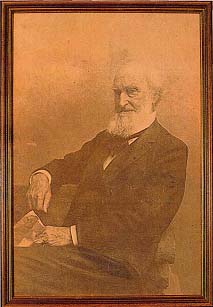
Portrait of John H. Gilbert, typositor for the Book of Mormon. Gilbert was twenty-six when he set the type for the translation; he paragraphed, capitalized, punctuated, and corrected spelling as well.
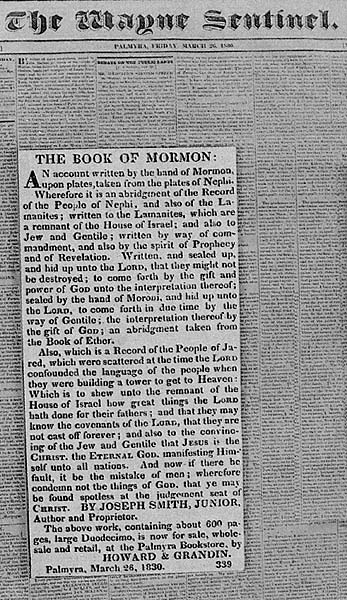
A page from the Wayne Sentinel with the first advertisement for the Book of Mormon. E. B. Grandin printed this weekly newspaper. The book did not sell well because local residents boycotted sales.
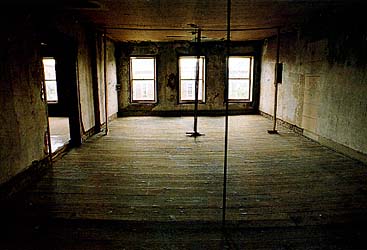
The second floor of the Grandin building, where E. B. Grandin and a partner, Luther Howard, operated a bindery. Here each sixteen-page sheet of the Book of Mormon was folded, stitched, and cut into a booklet, called a signature. There were thirty-seven signatures in the book. These were assembled and bound in sheepskin covers.
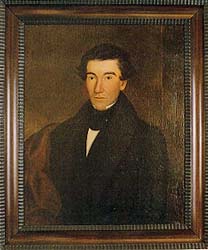
An 1843 portrait of Egbert B. Grandin. He was twenty-two when he published the Book of Mormon for three thousand dollars.
The press printed sheets with eight pages on each side. At top speed, an operator could run about four sheets on one side per minute. After one side of a sheet was printed, the sheet was hung on a line to dry before the other side was printed. Since the ink became slightly sticky, an inked sheet sometimes pulled type out of the press plate. An assistant periodically checked for missing letters. Because of letter dropouts and corrections, it is possible that no two copies of the book are exactly the same.
To print 5,000 copies of the first edition of the 590-page Book of Mormon, the printer printed a minimum of 185,000 sheets, not counting mistakes and extras. The typesetting, printing, and binding took from August 1829 to 26 March 1830. Even if the press ran continuously, the print run would have taken 129 days to complete. This estimate is based on twelve-hour work days, since the pressmen assigned to the job worked from sunup to sundown.
An old drawing titled View of Palmyra from Walkers Hill.
Photography by Craig Dimond